MEETING JESUS AND FOLLOWING HIM
FRANCIS CARDINAL ARINZE
Meeting Jesus
and Following Him
A Retreat Given
to Pope Benedict XVI
and the Papal Household
IGNATIUS PRESS SAN FRANCISCO
Unless otherwise noted, Scripture quotations (except for those within citations) have been taken from the Revised Standard Version of the Holy Bible, Second Catholic Edition, 2006. The Revised Standard Version of the Holy Bible: the Old Testament, 1952, 2006; the Apocrypha, 1957, 2006; the New Testament, 1946, 2006; the Catholic Edition of the Old Testament, incorporating the Apocrypha, 1966, 2006, the Catholic Edition of the New Testament, 1965, 2006 by the Division of Christian Education of the National Council of the Churches of Christ in the United States of America. All rights reserved.
In a few cases the Scripture wording has been adapted to conform to the authors text.
Cover art:
Christ and the Apostles Sailing on Lake Gennesaret
Cristoforo De Predis (1440-1486)
Biblioteca Reale, Turin, Italy
Alinari/Art Resources, New York
Cover design by Roxanne Mei Lum
2010 by Ignatius Press, San Francisco
All rights reserved
ISBN 978-1-58617-423-1
Library of Congress Control Number 2009935084
Printed in the United States of America
CONTENTS
I
INTRODUCTION
"Follow me" (Mt 4:19; Mk 1:17; Lk 5:27; Jn 1:43). These are engaging and essential words that our beloved Lord Jesus Christ addressed to some of his first disciples. And "they stayed with him that day" (Jn 1:39). This program will guide our meditations during these six days.
As you might guess, it was not without surprise and even fear that I received from the Holy Father the assignment to propose to you these meditations. My first temptation was to react like the prophet Jeremiah at the beginning of his call: Ah, Lord God! Behold, I do not know how to speak, for I am only a youth. The prophet continues: But the Lord said to me, Do not say, I am only a youth; for to all to whom I send you you shall go, and whatever I command you you shall speak (Jer 1:6-7).
But the following considerations came to my mind. This choice, this decision, comes from the Vicar of Christ. What other sign do you want to know the will of God? Moreover, the person who proposes the meditations for such spiritual exercises should strive to propose, not his own ideas or opinions, but what he believes to be the will of God, the word of the Lord. It is the Holy Spirit that animates retreats and illumines hearts, while the preacher is only an instrument. I am reassured also by the thought that you have come, not to listen to a learned professor who lectures, but to share some experiences and convictions of one who has tried to serve the Lord in the priesthood for half a century, the first half as a diocesan priest and bishop, and the other half in the Roman Curia. I shall therefore try to forget myself and concentrate on these experiences and convictions.
1. The Priest
The red thread that will run through all of these meditations is the image of the priest, who, called by Jesus, meets him, follows him, and seeks each day to become a better disciple. What do you seek? And they said to him, Rabbi, where are you staying? He said to them, Come and see. They came and saw where he was staying; and they stayed with him that day (Jn 1:38-39). These first disciples, who later became the first Apostles and the first priests, stayed with Jesus not only that day but right up to the day of the Ascension of Christ into heaven, that is, throughout his public life.
In these meditations, the word priest will be used. It will generally include all those who have received the ministerial priesthood in the Church, from the young presbyter just ordained to older priests, to bishops and also cardinals, and to the Holy Father. The context will indicate the distinction that is to be made.
The priesthood of Jesus Christ is one. It is manifested in a visibly moving way on Holy Thursday in the Papal Basilica of Saint Peter when the Holy Father concelebrates with a very large number of his priests of the Roman clergy and with cardinals, bishops, and other priests of the Roman Curia. In that solemn Chrism Mass all these priests of Christ renew their priestly promises. Every diocesan bishop concelebrates with his clergy in his cathedral church, and at the end of the rite he turns to the people and asks for their prayers so that he may become every day an image ever more perfect of Christ the Priest, the Good Shepherd, the Teacher and the Servant of all. When, therefore, the word priest is mentioned in the following meditations, there is no intention of ignoring the hierarchical order in the participation in the one priesthood of Christ.
Here is a simple illustration. As I stepped out of the Vatican basilica after solemn Vespers on December 31 last year [2008], a young priest saw the cardinal red and, with joy on his face, greeted me, saying: Best wishes for the new year, Your Eminence; I am a priest. My reply was not long in coming: I also am a priest. Best wishes for the new year about to begin. And we exchanged smiles of peace and joy in the priesthood of Christ!
2. The Priest , Alter Christus
These meditations will consider the priest as a disciple of Christ. It is Jesus who takes the initiative and calls him. It is Jesus who gives him the correct direction for his life. It is Jesus whom he should follow and imitate.
But there is also the dimension of the priest being a minister. Through presbyteral ordination, the Holy Spirit renders the priest capable of acting in the Person of Christ the Head for the service of all the members of the Church.
The priest is alter Christus ; he takes the place of Christ. As a consequence of this sacramental reality, to follow Jesus and to be his disciple becomes more urgent. Because of this, the priest has the obligation to follow Jesus even more closely than the other baptized.
3. Overview of These Meditations
For every human being, for every Christian, and even more for every priest, Jesus Christ gives meaning to life. He gives a sense of unity to all the things in which we are engaged. Jesus indicates the correct direction for our life because he is the way, the truth, and the life (cf. Jn 14:6). In these meditations, we shall have in front of us the priest who meets Jesus and follows him.
On the first day, tomorrow [chapters 2-4], we shall meditate on how the priest learns from Jesus to put God in first place. Therefore the priest seeks, with the grace of God, not to permit sin to enter into his life, and to do penance because of his weaknesses.
On Tuesday [chapters 5-7] we will fix attention on the priest who meditates on the mystery of the Incarnate Word and of Christ, the one and only Savior of all. He thanks Jesus, whom he meets in Holy Scripture.
On Wednesday [chapters 8-10] we will concentrate on the gift of Christ that is the Church, his Mystical Body, which the priest has the joy to love and serve and in which he has the vocation to evangelize in a dynamic way.
On Thursday [chapters 11-13] we will see the priest at prayer, at the celebration of the sacred liturgy and especially of the Most Holy Eucharist, in the Liturgy of the Hours, and while blessing or using sacramentals, all the time acting as an instrument of Christ and a minister of the Church.
On Friday [chapters 14-16] we will turn the reflections to some instances of justice, peace, and solidarityor the lack thereoftogether with what is expected of the voice of the Church. All will be entrusted to the hands of the Mother of Christ, the eternal High Priest, because she tells us: Do whatever he tells you (Jn 2:5).
We shall conclude on Saturday morning [chapter 17] by considering that there is a time to be born, and a time to die (Eccles 3:2).
Next page


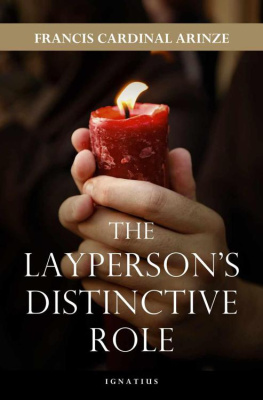

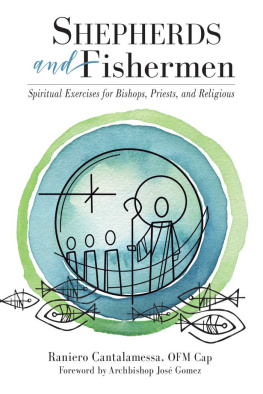
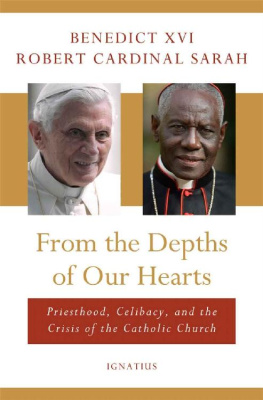


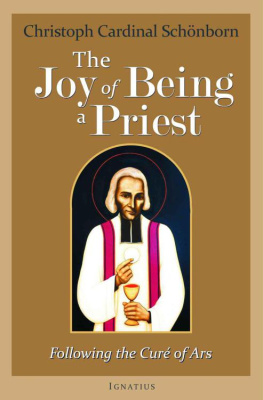
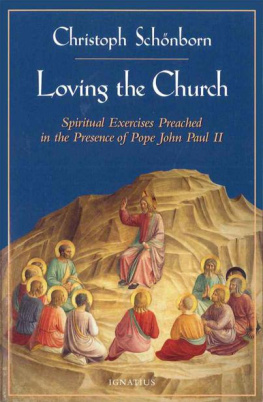
![Pope Francis [Jorge M Bergoglio] et al. - Open Mind, Faithful Heart: Reflections on Following Jesus](/uploads/posts/book/106755/thumbs/pope-francis-jorge-m-bergoglio-et-al-open.jpg)